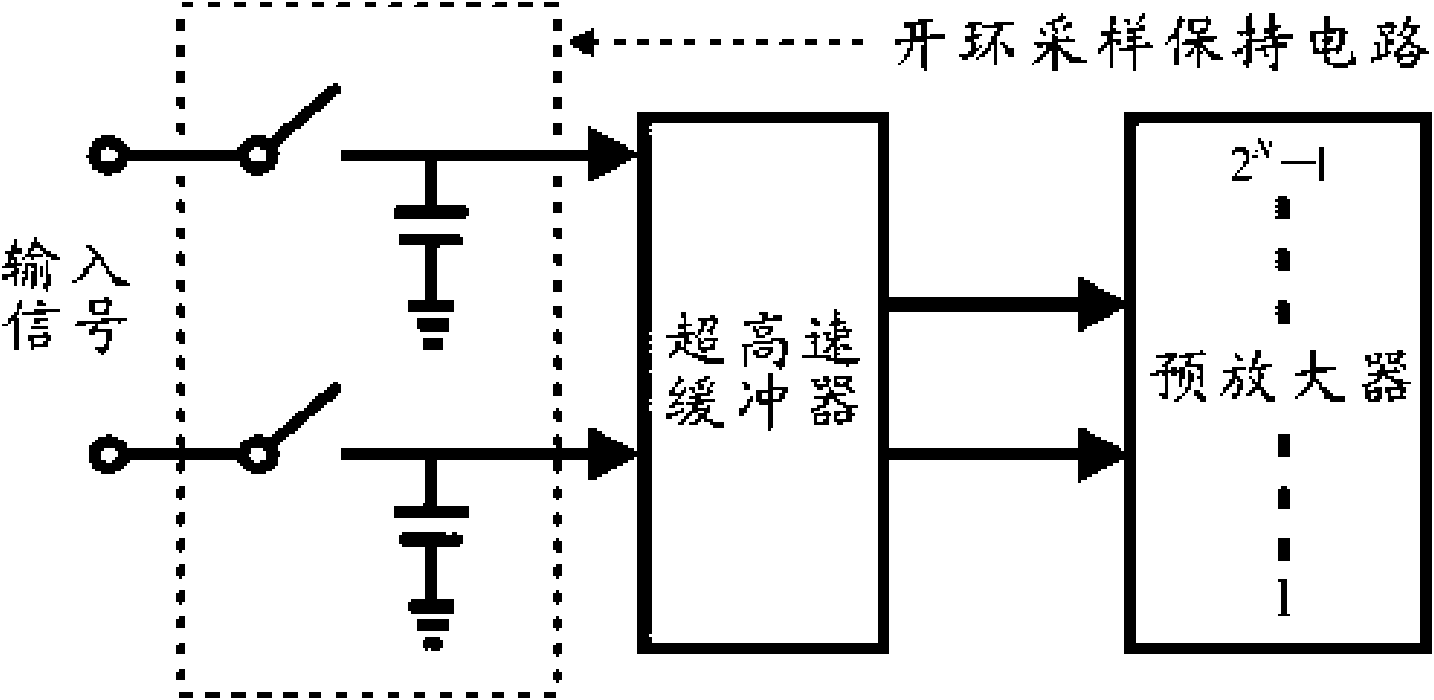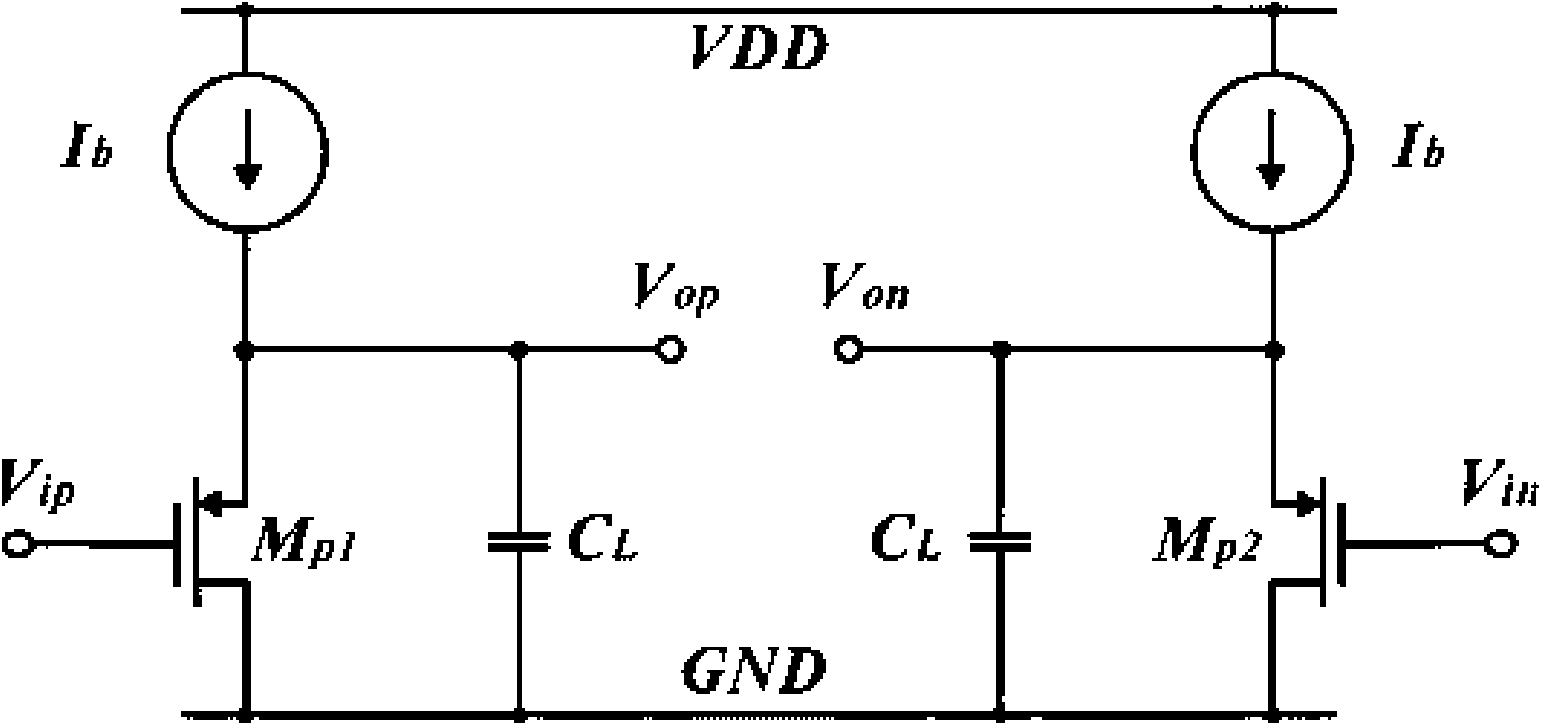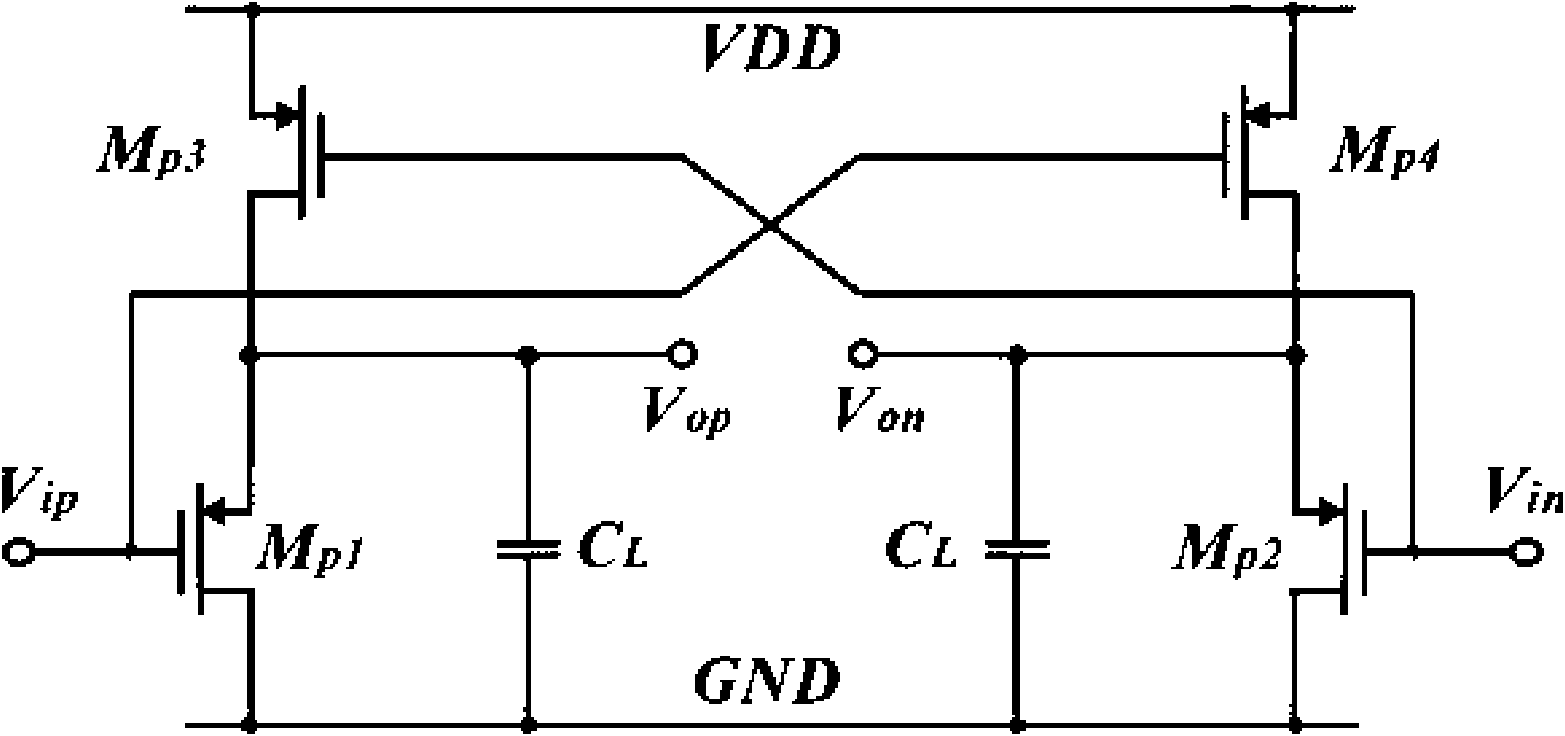Buffer based on source electrode follower
A source follower and buffer technology, applied in amplifiers with impedance circuits, logic circuits using dielectric elements, logic circuits using specific components, etc., can solve the problem of large analog input signal loss, small signal gain, Problems such as poor dynamic performance, to achieve the effect of high unity gain buffer output
- Summary
- Abstract
- Description
- Claims
- Application Information
AI Technical Summary
Problems solved by technology
Method used
Image
Examples
Embodiment 1
[0032] see Figure 4 , an embodiment of the present invention provides a buffer based on a source follower, the buffer includes:
[0033] a pseudo-differential input stage for receiving a differential input signal;
[0034] A cross-coupled common-source stage connected to a pseudo-differential input stage to form a negative resistance to cancel out the output resistance of the buffer;
[0035] a current source coupled to the pseudo-differential input stage for providing buffer branch current;
[0036] A capacitive load, connected to the pseudo-differential input stage, is used as an output load for the buffer.
[0037] Wherein, the pseudo-differential input stage includes a first PMOS transistor 110 (Mp1) and a second PMOS transistor 111 (Mp2); the drain of the first PMOS transistor 110 is connected to the ground voltage GND (141), and the gate of the first PMOS transistor 110 is connected to the second PMOS transistor 110. An input terminal 102 (Vip), the source and substr...
Embodiment 2
[0043] see Figure 5 , the embodiment of the present invention also provides another buffer based on a source follower, and the buffer includes:
[0044] a pseudo-differential input stage for receiving a differential input signal;
[0045]A cross-coupled common-source stage connected to a pseudo-differential input stage to form a negative resistance to cancel out the output resistance of the buffer;
[0046] a current source coupled to the pseudo-differential input stage for providing buffer branch current;
[0047] A capacitive load, connected to the pseudo-differential input stage, is used as an output load for the buffer.
[0048] Wherein, the pseudo-differential input stage includes a first PMOS transistor 210 (Mp1) and a second PMOS transistor 211 (Mp2); the drain of the first PMOS transistor 210 is connected to the ground voltage GND (241), and the gate of the first PMOS transistor 210 is connected to the second PMOS transistor 210. An input terminal 202 (Vip), the so...
PUM
 Login to View More
Login to View More Abstract
Description
Claims
Application Information
 Login to View More
Login to View More - R&D
- Intellectual Property
- Life Sciences
- Materials
- Tech Scout
- Unparalleled Data Quality
- Higher Quality Content
- 60% Fewer Hallucinations
Browse by: Latest US Patents, China's latest patents, Technical Efficacy Thesaurus, Application Domain, Technology Topic, Popular Technical Reports.
© 2025 PatSnap. All rights reserved.Legal|Privacy policy|Modern Slavery Act Transparency Statement|Sitemap|About US| Contact US: help@patsnap.com



